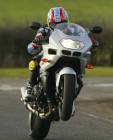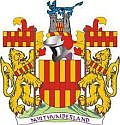Did that come from DrDiff? Calliper brackets included?
Think I could use that on my car



Adrian Worman wrote:Are they Viper discs also? Very comprehensive kit tho, price match that against the opposition from Wilwood, Baer, etc and they look good value.
I suppose I could use a Scarebird bearing adaptor to do the same thing instead of buying spindles? You used drop spindles in the end didn't you Ed?
 Also on multi piston fixed calipers you only count 1 side of the pistons not both sides for total square area of force. The Viper Calipers have staggered pistons,(one piston is a bit smaller then the other), this helps keep pad wear even. So this means the Viper Calipers must be mounted so the smaller piston is the lead piston. They must be rear hung to operate correctly and this places the bleeder screw in the highest position,(for proper brake line bleeding/purging). Hope this helps as a note buying Andy Finkbeiners Mopar B-Body Performance upgrades is a smart move! It covers all aftermarket and factory brake/chassis/engine/cooling/ body re-inforcing ectt money WELL spent!
Also on multi piston fixed calipers you only count 1 side of the pistons not both sides for total square area of force. The Viper Calipers have staggered pistons,(one piston is a bit smaller then the other), this helps keep pad wear even. So this means the Viper Calipers must be mounted so the smaller piston is the lead piston. They must be rear hung to operate correctly and this places the bleeder screw in the highest position,(for proper brake line bleeding/purging). Hope this helps as a note buying Andy Finkbeiners Mopar B-Body Performance upgrades is a smart move! It covers all aftermarket and factory brake/chassis/engine/cooling/ body re-inforcing ectt money WELL spent! 







 (scaring children)
(scaring children) 



Adrian Worman wrote:No crackpot thoughts there Daveman, scavenging science is what made the most gains on two stroke sports bike engines from the '70's up to the present day.
Pulses, pressure waves etc all play a part.
I know the tech doesn't have such a marked effect on four stroke engines but big gains can still be made from thinking out the exhaust system properly
In last months Mopar Muscle they removed a header and 2 1/2" system from a B body and replaced it with a 3" TTI full crossover system, made 30 hp and 35 ftlb on a chassis dyno, took 2 tenths off their baseline qtr time.
















Adrian Worman wrote:Kinky linky to XV Motorsports chassis stiffening system.......
http://www.xvmotorsports.com/products/d ... fm?nPID=14
Interestingly the Hotchkis system doesn't work the same way and is more like the rect section steel that Ed was describing using.
If you look at the area at the rear of the connector in those XV pics tho you'll see how comprehensivly the whole area is tied together. If that was a rect box section it wouldn't meet the floor till a foot or so away from the rear subframe, compare that to the die-cut system and the floor is sharing the load instantly. Not only is the floor being braced but it is helping to stiffen the rest of the car.

